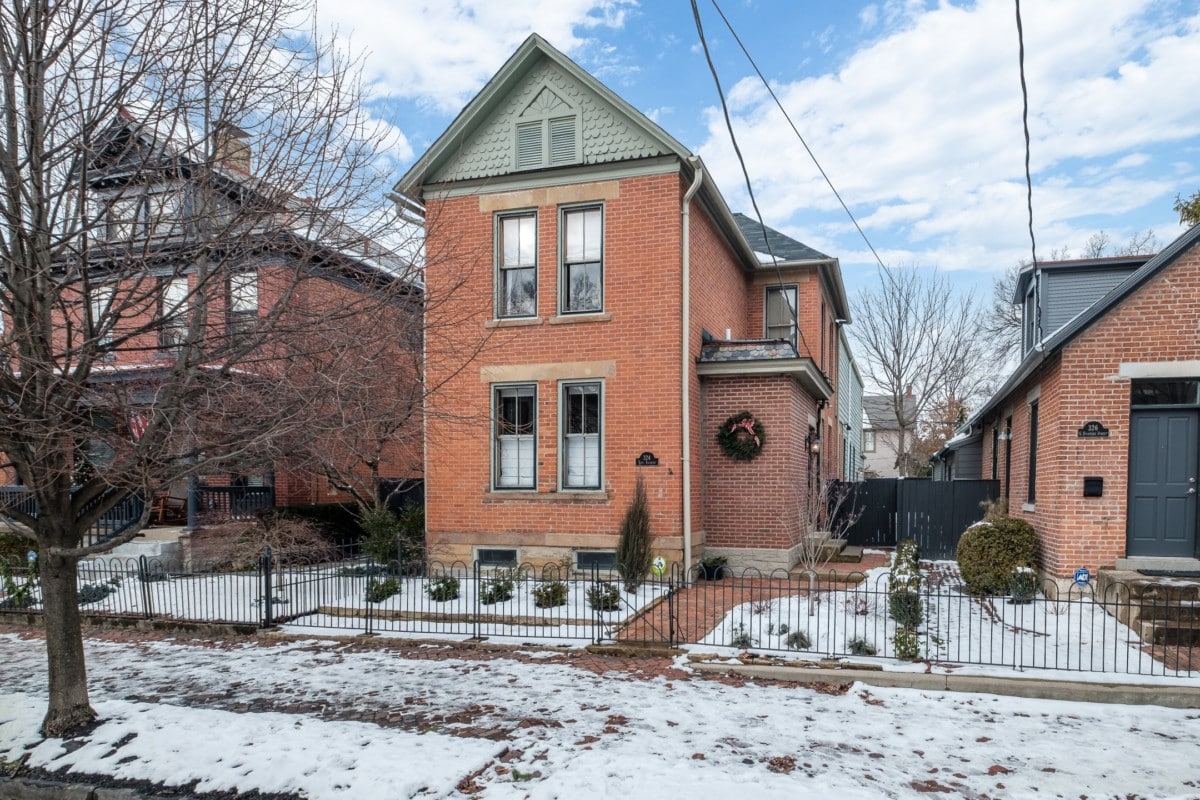11 Cheapest Ways to Heat a House This Winter
While winter brings the holidays, sweaters and scarves, and cozy nights curled up by the fire, this blustery season also brings higher heating costs. Want to know the cheapest way to heat a house and how to make it as energy-efficient as possible?
Whether you’re renting a home in Santa Clarita, CA, or purchasing a home in Long Beach, CA, We’ve collected the 11 cheapest ways to heat a house without breaking the bank.

11 cheapest ways to heat a house
1. Take advantage of your fireplace
Wood fireplaces are one of the cheapest ways to heat a house because they use a renewable resource, wood, which is readily available.
Though building a fire can be a cheap and efficient way of heating your home, if you don’t use your fireplace, be sure to keep the damper closed. Leaving the damper open is like leaving a 48-inch window wide open during the winter and can add up to hundreds of dollars in energy costs each winter.
Pro tip: Chimney sweep service company, The Floo Network shares, “Updating your old fireplace to a wood stove insert or fireplace retrofit is a great way to improve your home’s heating efficiency. Heated air from your home can escape up the chimney with traditional fireplace designs. With a wood-burning upgrade, you can enjoy improved performance, reliability, and safety while saving money on your heating costs.”
2. Use a space heater effectively
There are a few things you can do to make your space heater more effective. By increasing the thermostat setting on your central heating system, the space heater won’t have to work as hard. You can also use a fan to help circulate the heat from the space heater. Another tip is to ensure the space heater is the right size for the room you’re trying to heat. Lastly, place the space heater in the correct location – not close to any furniture or walls.
3. Check the vents
Another tip to decrease heating costs is to clear your vents. If they are on the floor, make sure they are not blocked by furniture or rugs. This will keep your heater from working overtime or sending heat to only one part of your home. Be sure to close the vents in rooms you don’t use and shut the door to those rooms. You can go one step further and block the bottom of the door to unused rooms to keep warm air from escaping parts of the house you want warm. Air return vent covers are another easy and affordable way of redirecting heat to your desired living space.
4. Lower the water heater temperature
Monitoring your water usage is a great way to lower your heating costs during the winter. Small changes, such as taking shorter showers instead of baths, not letting the water run, and using cold water for laundry, can result in big savings.
Additionally, be sure to lower the temperature of your water heater; Energy.gov claims that you can save 3-5 percent on your heating bill for every 10 degrees that you reduce your water heater, which shouldn’t exceed a maximum of 120 degrees.
5. Get a smart thermostat
A smart thermostat is a thermostat that can be controlled remotely by a user through a mobile app or web interface. Many different smart thermostat brands are available on the market, each with its unique set of features and benefits. Some of the most popular brands include Nest, Ecobee, Honeywell, and Emerson. Each brand offers different features and benefits that may appeal to different people. Some of the key benefits of owning a smart thermostat include saving money on your energy bill, controlling your home’s temperature from anywhere, and receiving alerts if your home’s temperature changes.
Smart thermostats typically cost between $100 and $250. Some more popular brands, such as Nest and Ecobee, tend to be on the higher end of that price range.
6. Caulk and weatherstrip doors and windows
If you’re feeling chilly because warm air is escaping through gaps underneath your doors, try this quick fix: roll up a hand towel and place it at the base of the door. If you’re crafty, you could even make a DIY draft snake.
Otherwise, caulking and weatherstripping doors and windows can lower your energy bills by sealing the gaps around doors and windows. This will help to keep the warm air inside your home and the cold air outside.
If you’re unsure if your windows and doors are drafty, an easy way to check is by holding a candle near the frame and watching to see if it flickers. Once you’ve identified any air leaks, apply rubber weatherstripping to large gaps and fill smaller areas with caulk.

7. Add insulation to your home
Home insulation is the process of insulating a home to make it more energy efficient. The benefits of home insulation include lower energy bills, a more comfortable home, and a quieter home. The cost of home insulation varies depending on the size and type of home, but it is typically a relatively affordable home improvement.
If your attic or crawlspace isn’t insulated properly, it can be a heat sink to your entire home. This will make your heating system work overtime to keep your home at a comfortable temperature, and the harder it works, the more you pay.
8. Reverse your ceiling fan direction
Some may think ceiling fans are just for keeping cool during the summer, but they can also be the cheapest way to heat a house in the winter. Setting your fan to rotate clockwise at a low speed will push rising warm air to the ceiling to be distributed down the walls and back to the floor. This will make a room feel warmer, allowing you to lower your thermostat temperature and save on heating bills.
Reversing your ceiling fan direction is simple. Most ceiling fans include wall or remote controls, making it as easy as pressing a button. If your fan does not come with one of these controls, a toggle switch should be located on the motor housing below the blades.
9. Open your windows: let the sun help heat your home
On sunny winter days, keep your blinds open to allow direct sunlight to shine through your windows. This can be one of the most efficient ways to heat your home, not to mention it’s completely free.
This technique is known as passive solar heating. It can be maximized if your home features materials such as tile, wood, steel, concrete, or any other material that can act as a heat sink during warmer months and a heat source during colder months.
Knowing the right times to keep your blinds or curtains closed can also help lower heating costs. On cloudy days or when the sun goes down, closing your blinds and curtains will help retain heat by acting as an insulator between the cold glass and the room you are trying to keep warm.
10. Educate your family and roommates about conserving energy
There are a few things you can do to educate your family and roommates about conserving energy to save money on heating your house this winter. Explain why conserving energy is important. Not only will it save you money on your energy bill, but it will also help reduce your home’s carbon footprint. Show them how easy it is to save energy. Turning off lights when you leave a room, unplugging electronics when not in use, and wearing warmer clothing inside can all help conserve energy.
Help them understand the different ways they can save energy. For example, turning down the thermostat a few degrees, using energy-efficient light bulbs, and sealing any cracks or gaps around doors and windows will help keep heat in your home and lower your energy bills. Encourage them to make conserving energy a habit. The more everyone in your home is on board with conserving energy, the more money you’ll save on your energy bills.
11. Throw on a sweater and upgrade your linens
You don’t need to wear a parka around the house, but put on a sweater and some wool socks or buy yourself a warm, fuzzy bathrobe when you’re padding around the house this winter.
You can also keep warm at night by ensuring that your bedding is up to par. Down-filled blankets are very effective when trapping heat. For the warmest option, we suggest a fill power of 600-plus. The fill-power of a blanket can often be found on the label or tag.

Hopefully, these tips keep you warm all winter long
After reading this guide, you now have a better understanding of how to heat your house cheaply this winter. The best way to heat your house cheaply this winter is to use a combination of methods. You can significantly lower your heating costs by using a space heater in conjunction with insulation and draft protection. Using natural sunlight and fans to circulate warm air can also help keep your home warm without breaking the bank. You should plan to implement some of the tips and tricks discussed to keep your home warm and toasty all season long.
The post 11 Cheapest Ways to Heat a House This Winter appeared first on Redfin | Real Estate Tips for Home Buying, Selling & More.
